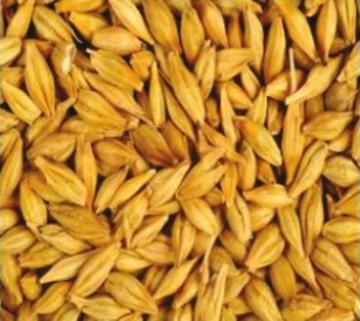
Barley (Hordeum vulgare)
Local names: Hindi: Jav, Jau Kannada: Jave-godhi Malayalam: Barli, Yavam Marathi: Satu, Jav Sanskrit: Aksata, Akshata, Dhanyaraja Tamil: Barliarisi Telugu: Barlibiyam, Dhanuabhedam Urdu: Jao, Jav
Barley is widely grown in Europe and in the cool and dry climates of North America and Asia. It is also one of the very popular grains in feeding livestock.
Nutritive value
Maize, wheat, triticale and sorghum are recognized as high energy grains, whereas, barley and oats are lower in energy content. The lower energy value of barley is due to its lower starch content, a higher content of poorly digested glucans, and higher fiber content. Barley contains water soluble carbohydrates called β-glucans which are poorly digested, especially in non-ruminants. However, the glucans are digested by microbial action in rumen. The crude protein varies from 11-16% and TDN from 78-80%. The lipid content of barley grain is low; usually less than 2.5% of dry matter. Barley is deficient in the amino acid lysine.
In many parts of developed countries barley is used for fattening beef animals. Beef cattle are fattened on concentrate diet consisting of about 85% bruised barley without the use of the roughage. In this process the barley is usually treated so that the husk is kept as one piece and at the same time the endosperm is exposed, the best results being obtained by rolling the grain at a moisture content of 16-18%. Storage of high moisture barley of this type can present a problem because of the possibility of mold growth. Satisfactory preservation of the moist grain can be obtained if it is stored anaerobically. An additional or alternative safeguard is to treat the grain with a mould inhibitor such as propionic acid. Certain hazards such as rumen acidosis and bloat can be encountered with high concentrate diets given to ruminants and it is necessary to introduce this type of feeding gradually over a period of time. There are no significant toxins in barley.
